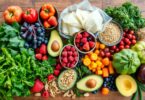Ever wondered why some foods are called “vegetables” and others “fruits”? Or why some cooking methods are more popular in certain cultures? The world of food classification is complex and interesting. It’s more than just labels. In this guide, we’ll explore the science, traditions, and uses of food classification.
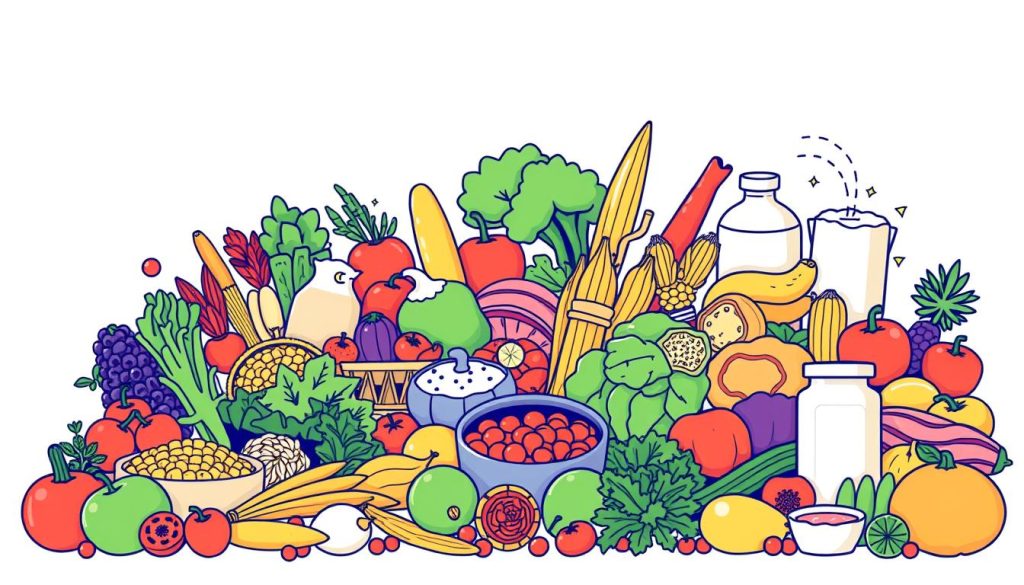
Key Takeaways
- Discover the importance of food classification systems and their impact on our dietary choices, culinary traditions, and overall understanding of nutrition.
- Explore the scientific principles of food taxonomy, including the classification of foods based on their botanical, nutritional, and sensory characteristics.
- Understand the diverse culinary categories that shape regional and global cuisine, from baking and boiling to the influence of cultural traditions.
- Investigate the classifications used in dietary patterns, such as vegan, vegetarian, and omnivore diets, as well as macronutrient and micronutrient groupings.
- Delve into the world of ingredient-based classifications, from whole foods to processed products, and their implications for sustainable food systems.
Understanding the Importance of Food Classifications
In the world of food and nutrition, classifying food is key. It’s vital for many fields, like cooking and food science. By exploring how we group foods, we learn more about what we eat and how to eat better.
Why Food Classification Matters
Food classification helps us understand what we eat and how it affects us. It lets us make choices that keep us healthy. It also helps the food industry manage their products and meet rules.
Benefits of a Well-Structured Food Classification System
A good food classification system has many advantages:
- Improved Dietary Guidance: It helps doctors and nutritionists give better advice on what to eat.
- Enhanced Food Safety: It helps spot and manage food dangers.
- Sustainable Food Production: It guides us to choose foods that are better for the planet.
- Culinary Innovation: It inspires chefs to try new things in the kitchen.
As we move forward in food classification, staying up-to-date is crucial. Embracing this key part of food science opens doors to new culinary, nutritional, and environmental discoveries.
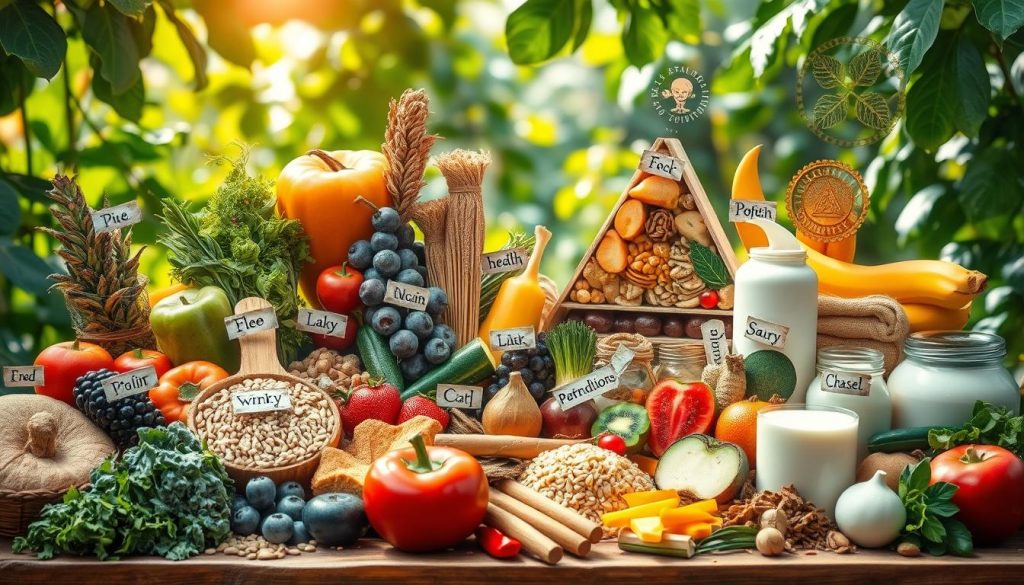
Food Taxonomy: The Science Behind Food Classification
Exploring food taxonomy, we find the detailed science of classifying foods. This area, started by botanists and food scientists, sorts out the wide variety of foods. It looks at their physical, chemical, and biological traits.
The history of food taxonomy goes back to ancient times. Early systems were based on culture and religion. Today, we use advanced tools and methods to better understand food types and regional food classifications.
At the core of food taxonomy is food quality classification. It considers many factors, like food safety categories and food cultural classifications. By studying each food’s unique features, experts can create detailed food classification techniques. These help in food classification research, production, and eating.
“The study of food taxonomy is not merely an academic exercise; it is a crucial tool for ensuring the safety, quality, and diversity of our global food system.”
As we learn more about food taxonomy, scientists and leaders keep working to uncover its secrets. They study how plants relate to each other and the chemical makeup of food types. This ongoing effort will shape our food future.
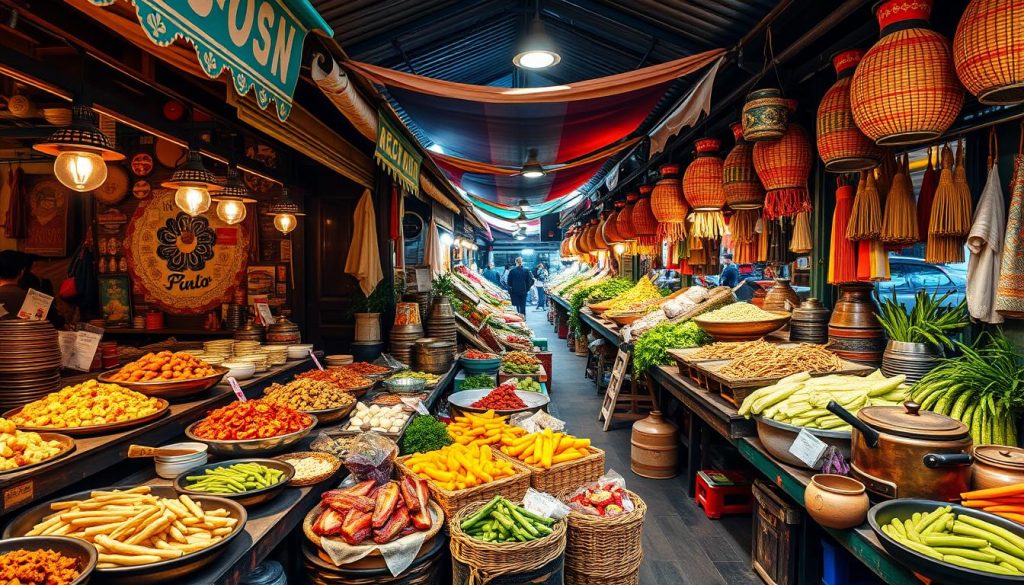
Culinary Categories: Classifying Foods by Cooking Methods
In the world of cooking, how a dish is made matters a lot. The sizzle of a pan-fried steak and the smell of fresh bread are key. Cooking methods are a big part of how we sort foods.
Baking, Boiling, and Beyond
Foods are grouped by how they’re cooked, like baking, boiling, or frying. Each method gives a dish its own taste, texture, and health benefits. For example, baked goods are different from boiled veggies, which keep more vitamins.
Regional Culinary Traditions
Regional cooking styles also shape how we sort foods. The Mediterranean uses wood-fired ovens, while East Asia favors steaming woks. These traditions show the variety in culinary categories and food classifications in culinary arts worldwide. They add depth to our food world and show why knowing cooking method categories and regional culinary traditions is key.

“Cooking is not just about ingredients; it’s about the technique, the method, and the process.”
– Gordon Ramsay
Dietary Patterns and Nutritional Groupings
Food classifications are key in understanding dietary patterns and nutritional groupings. This part looks at how foods are grouped based on vegan, vegetarian, and omnivore diets. It also covers classifications for macronutrients and micronutrients.
Vegan, Vegetarian, and Omnivore Diets
Vegan diets don’t include any animal products like meat, dairy, or eggs. Vegetarian diets allow for dairy and eggs but no meat. Omnivore diets include a mix of plant-based and animal-based foods.
These diets shape how we classify foods. Vegan diets focus on plant-based sources of macronutrients and micronutrients. Vegetarian diets include dairy and eggs. Omnivore diets offer a wide range of foods, combining plant-based and animal-based sources.
Macronutrient and Micronutrient Classifications
Foods can also be grouped by macronutrient and micronutrient classifications. Macronutrients like proteins, carbohydrates, and fats give us energy. Micronutrients, including vitamins and minerals, are vital for our health.
This system helps us understand the nutritional value of different foods. It aids in creating balanced diets. By knowing these classifications, we can make better choices to meet our nutritional needs.

Cultural Cuisine Types: The Influence of Tradition
The world is full of different foods, each telling a story of a place’s culture. From India’s spicy curries to Japan’s fine sushi, food shows where we come from. It’s all about the mix of culture and place.
It’s key to know about cultural cuisine types to really get the variety of foods worldwide. We’ll look at how global food types fit into regional food classifications.
Exploring the Diversity of Culinary Traditions
What we eat often shows a place’s past, its land, and its culture. Here are some examples of how cultures group their dishes:
- In the Mediterranean, food is all about olive oil, fresh veggies, and sea food. This leads to dishes like pasta, pizza, and regional food types like Greek salad and paella.
- East Asian foods, like Chinese and Japanese, focus on rice, noodles, and light flavors. This results in stir-fries, dumplings, and sushi.
- Latin American foods are shaped by local ingredients. This gives us the lively global food types of tacos, empanadas, and ceviche.
“The diversity of the world’s cuisines is a testament to the richness of human culture and the ingenuity of our ancestors in shaping the flavors we enjoy today.”
By diving into cultural cuisine types and food cultural classifications, we learn to value the culinary traditions that shape our food world.
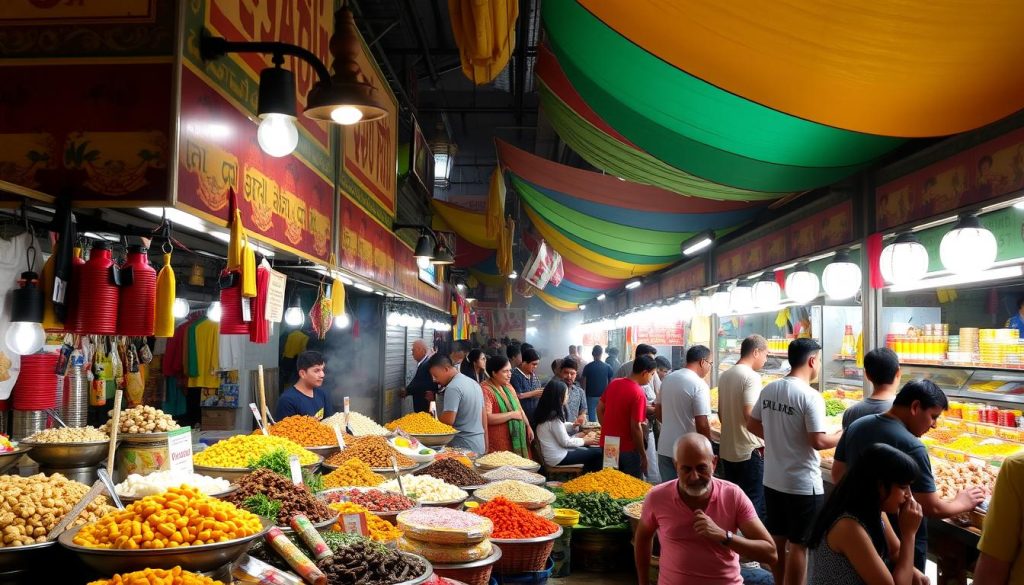
Comprehensive Exploration of Food Classifications
Understanding food classifications is complex. It involves knowing the many food categories and the detailed systems used to sort them. This deep dive explores the different food classification systems. It highlights the details that help us understand the food world.
Understanding the Breadth of Food Categories
The food world includes everything from fruits and vegetables to grains and legumes. This wide range includes basic groups like meats, dairy, and seafood. It also covers special groups like herbs, spices, and fungi. Learning about these categories helps us see the complexity of food classification.
Navigating the Complex World of Food Classification
The guide to food classification looks at the ways to organize food. It covers scientific classifications based on plants and animals to culinary and cultural divisions. Knowing these details is crucial for understanding the food world.
“The more we understand the depth and breadth of food classifications, the better we can appreciate the richness and diversity of the culinary world.”
If you love food, work in nutrition, or just find it interesting, this exploration is for you. It offers a deep look into the complex and exciting world of what we eat.
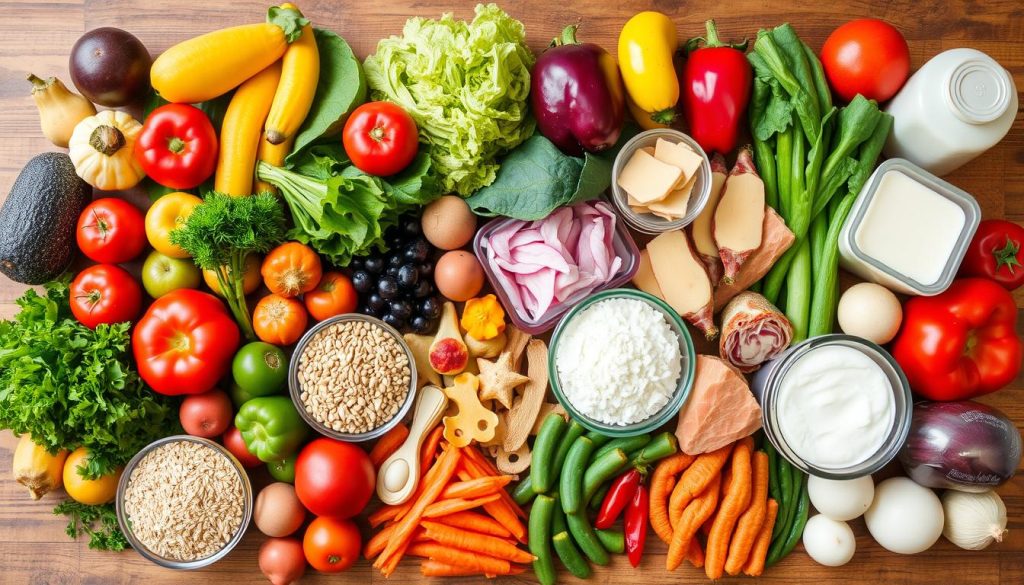
Ingredient-Based Classifications: From Whole Foods to Processed
In the world of food, knowing how ingredients are classified is key. It helps us understand what we eat, how it’s made, and its quality. When we shop, it’s important to know the difference between fresh foods, whole grains, and processed items.
Fresh Produce and Whole Grains
Healthy diets focus on whole, unprocessed foods. These whole foods include fruits, veggies, and grains like brown rice and oats. They keep their natural nutrients and fiber.
- Fresh fruits and veggies are full of vitamins, minerals, and antioxidants.
- Whole grains offer complex carbs, protein, and plant compounds.
Processed and Packaged Foods
Then there are processed and packaged foods. These foods are changed to last longer, taste better, or meet demand. They range from simple items like canned beans to complex products with many additives.
- Some processed foods are just frozen or canned to keep them fresh.
- Other foods are heavily processed with lots of food science ingredients.
Knowing how foods are classified helps us make better choices. It’s about nutrition, food labeling, and the environment. Choosing whole foods over processed ones is healthier and supports sustainable farming.
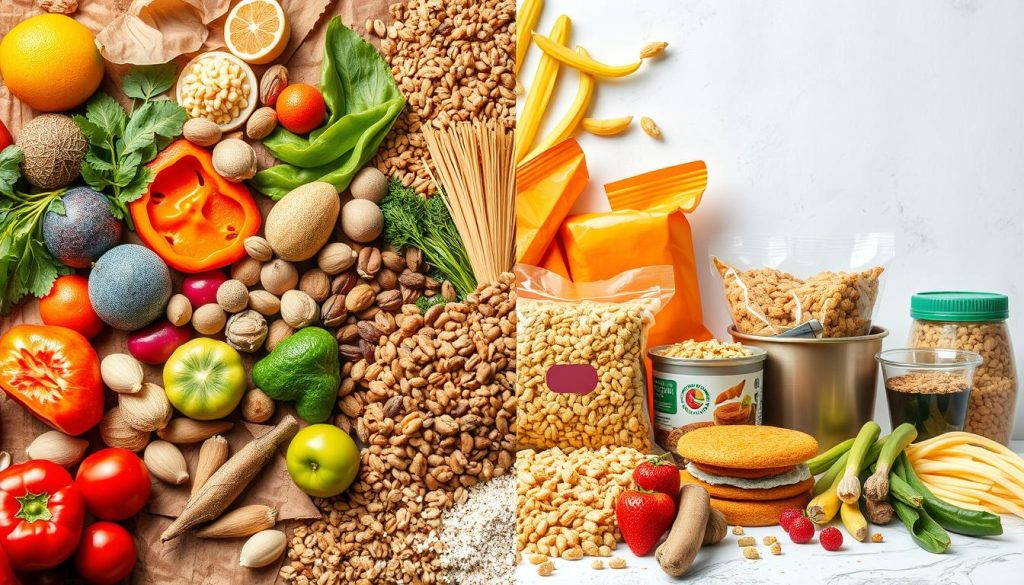
Sensory Profile Distinctions: Taste, Texture, and Appearance
Our senses are key in how we see and taste food. The way a dish tastes, feels, and looks is vital. It shapes our food choices and cooking skills.
Taste is a mix of flavors like sweet, sour, and salty. These flavors help us decide how to season and serve food. Texture, like crunchiness or smoothness, also matters a lot. It affects how we enjoy our food and how it’s made.
The look of a dish is also important. Its color and shape can make us excited to try it. They set our expectations for the taste and feel of the food.
“The sensory profile of a dish is the foundation upon which the culinary arts are built. It is the language through which chefs and food enthusiasts communicate their culinary vision.”
Knowing about sensory profiles helps us understand food better. It lets us enjoy and appreciate the wide range of dishes we have.
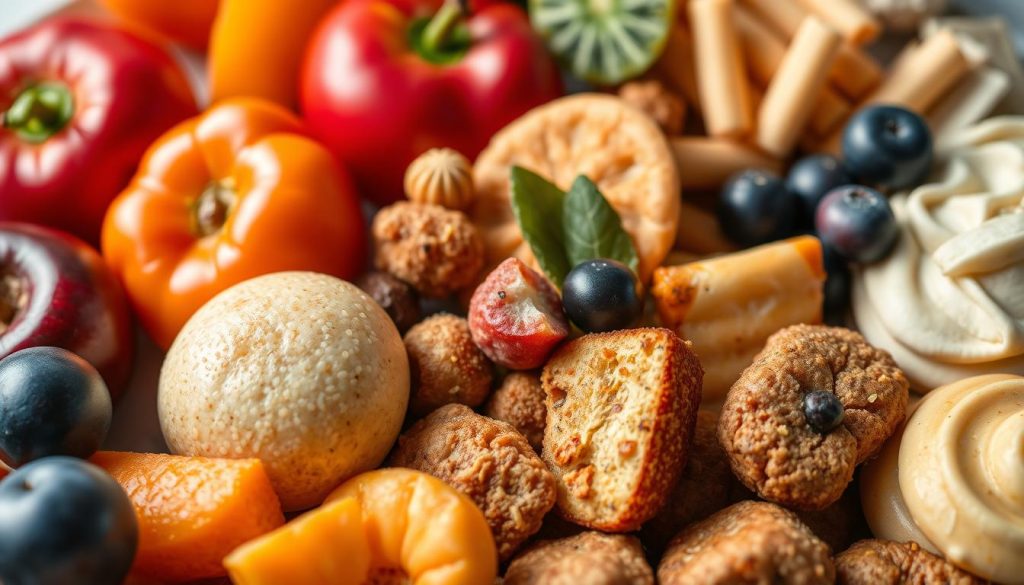
Sustainable Food Systems: Classifying for a Greener Future
The world is waking up to the environmental impact of our food choices. Classifying sustainable food systems is now key. We explore organic, locally sourced, and eco-friendly foods. These sustainable food classifications shape the food industry and help consumers make greener choices.
Organic and Locally Sourced Foods
Organic food categories are on the rise as people look for locally sourced foods. These foods are made sustainably and are free from harmful additives. They meet strict guidelines and certifications.
Eco-Friendly Food Production Methods
The food industry is focusing more on eco-friendly food production. Techniques like regenerative agriculture and sustainable aquaculture are gaining recognition. They are part of the sustainable food systems movement.
By understanding and embracing these sustainable food classifications, we can all help create a greener future. This is for the betterment of our global food systems.

“The future of food lies in sustainable, eco-friendly practices that prioritize the health of our planet and its people.”
Food Allergies and Intolerances: A Special Classification
In the world of food, there’s a special group for foods that can cause allergic reactions or intolerances. This group is key for keeping food safe and helping people with dietary needs make good choices.
Food allergies and intolerances happen when the body doesn’t react well to certain foods. This can lead to uncomfortable and sometimes dangerous symptoms. To help, food labels clearly show if a food might cause a problem.
- Common food allergens include peanuts, tree nuts, shellfish, eggs, dairy, wheat, and soy.
- Food intolerances, such as lactose intolerance or gluten sensitivity, can also require special dietary considerations.
By labeling foods that might cause allergic or intolerance reactions, the food industry helps people make safe choices. This system is important for keeping everyone safe and healthy.
“Proper food classification and labeling are essential for individuals with food allergies or intolerances to avoid potentially life-threatening reactions.”
As we learn more about food allergies and intolerances, the system for classifying them keeps getting better. New research and updates help keep this system a crucial tool for health and safety.
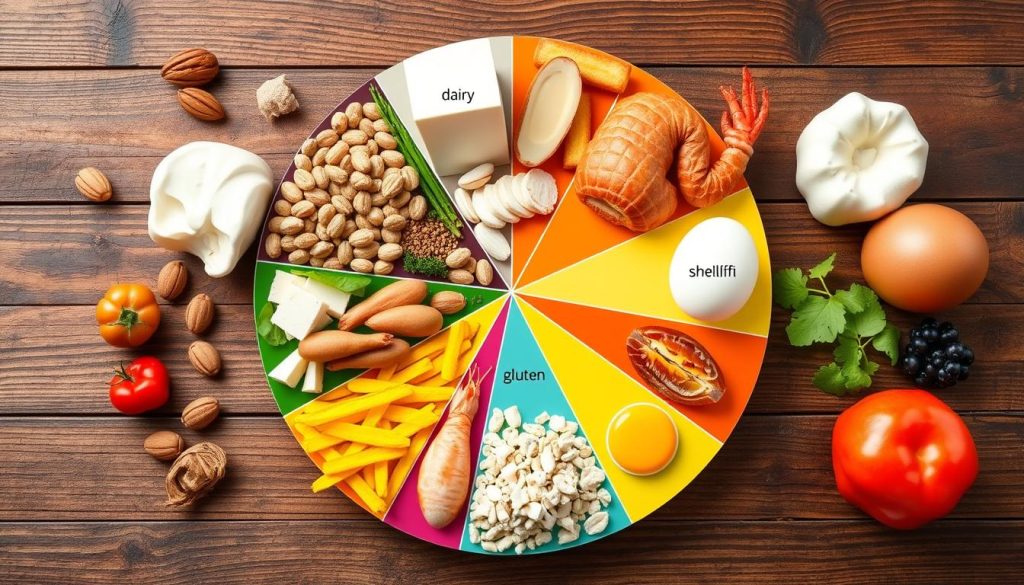
Global and Regional Food Classifications
The world of food is full of different traditions. Each place adds its own flavors and ways of cooking. From the Middle East’s spicy dishes to Japan’s sushi, it shows how rich human culture is.
Exploring Diverse Culinary Traditions
Traveling around the world, we see food classifications tied to each culture. In India, foods are sorted by six Ayurvedic tastes. In China, ingredients are grouped by yin-yang balance. These systems show how much people value flavor balance in their cooking.
Recognizing Local and Regional Specialties
There’s more to food than just global types. Local and regional specialties are also important. Think of Québec’s poutine or Mexico’s mole sauces. These dishes highlight unique flavors and cooking methods passed down through generations. Learning about these foods enriches our culinary adventures and helps keep global food heritage alive.
“Cooking is not about convenience and it’s not about shortcuts. Our food culture, reflected in our sustainable food classifications, is about sustaining heritage, community and regional diversity.”
Exploring global and regional food classifications deepens our appreciation for culinary diversity. By understanding these classifications, we gain insight into the cultural, nutritional, and sensory aspects of the foods we love.
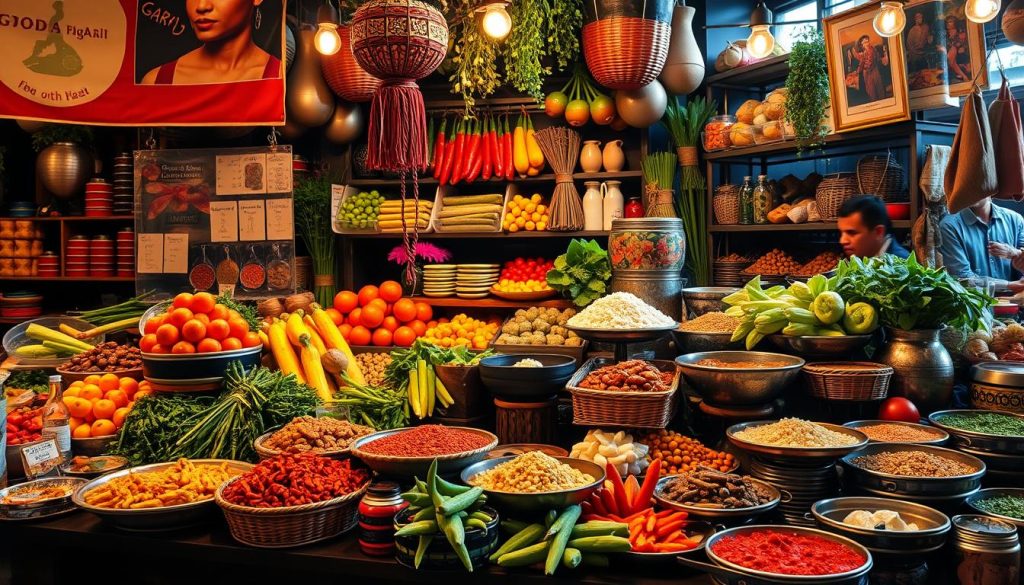
Food Classification in the Industry and Research
Food classification systems are key in many fields. They help professionals understand food products, ingredients, and nutritional profiles. These systems are vital in food science, nutrition research, food service, and hospitality. They drive innovation, ensure rules are followed, and help make informed choices.
Food Science and Nutrition Research
In food science and nutrition, these systems are a solid base. They help researchers study food’s chemical, physical, and biological aspects. This research informs new food products, dietary advice, and health policies.
Food Service and Hospitality Classifications
In food service and hospitality, these systems are crucial. They guide menu planning, inventory, and following rules. Chefs and restaurateurs use them to meet standards, dietary needs, and safety rules. This ensures quality and safety for customers.






